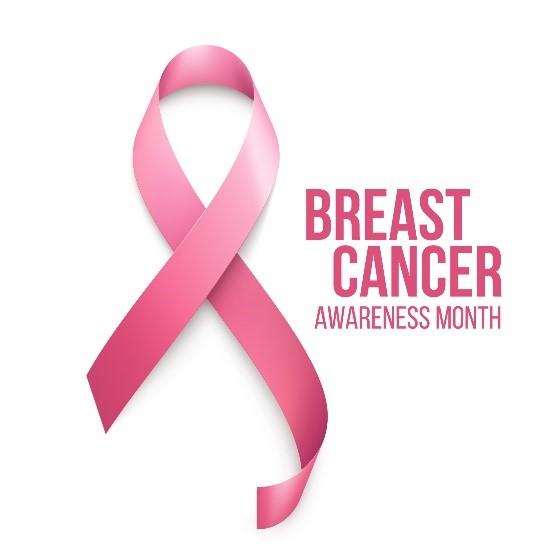October is National Breast Cancer Awareness Month, and pink ribbons are EVERYWHERE to remind people to be aware of breast cancer (as if we’re not already)….and of course, for women to dutifully get their mammograms.
Walks, runs and other fund-raising events are conducted to help “find the cure.”
What a crock and an absolute waste of time.
Let me clue you in—any time you see “awareness” events that are aimed at finding some mysterious, yet-unknown cure for a disease, it’s complete BS.
And breast cancer is no different.
Here’s what I bet you don’t know, yet must know, about pink ribbons and all the hoopla.
The roots of the ribbons
Breast Cancer Awareness Month was founded in 1985 as a joint effort by the American Cancer Society and the pharmaceutical giant Astra Zeneca (which was called Imperial Chemical Industries at that time).
The aim of BCAM from the start has been to push mammograms as the most effective weapon in the fight against breast cancer.
Well, there are a few things wrong with this picture.
First of all, mammograms expose you to dangerous cancer-causing ionizing radiation!
So the “prevention” is actually a cause! I wish I could make this stuff up.
Plus mammograms are frequently incorrect, showing between 20-50 percent false positives.
A recent study published in the New England Journal of Medicine estimated that among women younger than 40 years of age, breast cancer was over-diagnosed (in other words, tumors were detected that would never have led to clinical problems) and wrongly treated in 1.3 million US women over the past 30 years!
And as if that’s not enough, BCAM co-founder Astra Zeneca is the manufacturer of the blockbuster breast cancer drug Tamoxifen, which is classified as a HUMAN CARCINOGEN!
How’s that for a kicker?
Susan’s raising some eyebrows too
The largest of the breast cancer charities, the Susan G. Komen Foundation (also currently known as just “Komen”) is also raising some eyebrows.
One example is Komen’s deal with KFC—for every pretty decorated-pink bucket of fried chicken sold, KFC donated 50 cents to Komen.
But fast and processed foods are a well-known cause of many diseases, including cancer!
There’s more.
In 2012, Komen partnered with the Coca Cola Company promoting FUZE tea. FUZE contained 31 grams of sugar, high fructose corn syrup (most likely genetically modified), and sucralose.
Refined carbs and sugars literally FEED cancer cells in your body! Plus sucralose has been linked to leukemia and other blood cancers in animal studies.
And in 2013, Yoplait held a campaign called “Save Lids to Save Lives.” They donated 10 cents per lid with a special code that consumers could use. Yet Yoplait is loaded with sugar and hormone-laced dairy, both of which are tied to cancer!
Do you see the madness here?
End the lunacy!
Instead of getting caught up in pink ribbons and racing for cures, how about preventing breast cancer to begin with?
This is where you can make a tremendous difference in whether or not you will be among the one out of eight women who will face the disease!
And even if you are facing breast cancer, these strategies will help make your body a less hospitable home for cancer to begin with, and support your body’s efforts to heal.
Here’s how:
Reduce stress
Stress weakens your immune system function, and your immune system protects you against cancer!
Do whatever it takes to reduce the stress in your life. Regular exercise is a great way to start, but you can also consider counseling, meditation, acupuncture, prayer, deep breathing and essential oils, to name a few.
Have a gut-healthy diet
Sugar and refined carbs (which turn to sugar when digested) feed cancer cells, harmful yeasts and parasites and depress your immune system functioning, so avoiding them is key to a healthy gut and strong immune function.
Also, concentrate on fiber-rich fresh vegetables (especially cruciferous vegetables like cabbage, broccoli, cauliflower and Brussels sprouts), as well as fermented foods like sauerkraut, miso, pickles, kimchi and kombucha.
Curb inflammation
Inflammation is a contributing cause to our 2 biggest killers—heart disease and cancer. So it’s crucial to curb inflammation as much as you can.
Refined carbs are very inflammatory to your body, so this is yet another reason to avoid them as much as possible.
Also, drink at least eight 8 oz. glasses of filtered water each day, keep the coffee and alcohol under control, and avoid soda like the plague.
And last but not least, take advantage of Nature’s anti-inflammatory—Omega-3 essential fatty acids! Omega-3 EFAs have been shown to help stop cancerous growth and metastasis by actually halting the nourishing blood supply to the tumor!
In addition to incorporating more wild-caught oily fish into your diet, a pure, molecularly-distilled, pharmaceutical grade fish oil formula like VitalMega-3 can help ensure your body has healthful levels of these crucial nutrients.
VitalMega-3 provides 1,200 mg of soothing Omega-3 fats in every 2-capsule dose, including the superstars EPA and DHA!
Support healthy Vitamin D levels
A recent study at the University of California, San Diego School of Medicine and published in the journal PLOS ONE found that that women with higher blood concentrations of vitamin D had a significantly lower risk of breast cancer—to the tune of one-fifth the risk of those who had lower vitamin D levels!
Since vitamin D is a very common deficiency (especially this time of year) and food sources are limited, one of the best ways to get what your body needs is to take with a medical grade supplement like Optimum DK Formula with FruiteX-B!
Optimum DK Formula provides a therapeutic 5,000 IUs of vitamin D3, plus its immune-enhancing partners Vitamins K1 and K2, and the mineral boron.
Rethink mammograms
Mammograms only detect cancer once it has occurred--they do NOTHING to prevent it.
And even if you have a negative mammogram, you don’t necessarily have a clean bill of health—you still might have breast cancer, but the tumor just isn’t large enough to be detected.
A much safer, thorough and proactive approach is thermography.
Thermography doesn’t expose you to dangerous radiation of any kind. Instead it measures the infrared heat emitted by your body and translates that information into thermal images.
Thermography can detect signs of physiological changes due to inflammation and/or tumor related blood flow up to 8-10 years before mammography or a physical exam can detect a mass!
I strongly encourage you to discuss thermography with your doctor. I use thermography and will never, ever have another mammogram. Unfortunately it is not covered by insurance, but the cost is not outrageous—it typically ranges between $150-$200, which is comparable to many co-pays!
Focus your breast cancer “awareness” where it really matters most—PREVENTION!
And don’t get caught up in the pink ribbon BS.
To your health,
Sherry Brescia
The information in our articles are NOT intended to replace a one-on-one relationship with a qualified health care professional and are not intended as medical advice.












I could not agree more with Sherry. My only reason for having the first one was because my husband insisted I should. They were so painful that I decided to stop having them. Then my husband discovered, as Sherry said, that they can actually cause cancer – so he is quite relaxed that I refuse to have any more.
I was diagnosed with probable breast cancer after having a lump removed. This was on a Friday and I was sent home with relevant pamphlets, etc. On Monday morning I received a call saying pathology had declared the lump cancerous. I drove to the doctors office and was met by the Chief pathologist. He said there had been an error and I was fine after all. I was lucky that one pathologist caught the error of the other. Moral of the story, get a second opinion from a different lab. Don’t believe everything you are told. …I had been truly surprised by the diagnosis because that lump had been there for 25 years and started as a benign cyst. Then it developed scar tissue which is what the 1st pathologist didn’t read correctly. Also, I’m with everyone else when I say don’t bother with mammograms..be aware of other, better options.
I couldn’t agree with you more. I had one mammogram only in my life – and never again (it wasn’t even that painful). Subsequent reading has convinced me that most mammograms are totally unnecessary; on occasion, they might even exacerbate a dormant scenario. And yes, while genetic make-up can affect an individual’s tendency to a malignant tumour (my late father – a doctor did NOT like the term cancer), our lifestyles and diets also play a significant part in our well-being. All of us need to be pro-active and take responsibility for our lives. Unfortunately, today’s work world is not conducive to us being able to do so; being part of the hamster treadmill and thus being beholden to forces outside of ourselves – not to mention being brainwashed by extraneous influences – really doesn’t help.
I’m with you on this all the way. I’ve known for years
the dangers of mammograms. In all these years we could have conquered cancer if the money actually went to research. You are right we can do a lot for ourselves to stay healthy and away from junk foods and additives.
Thank you for putting the truth out there.
Thanks for all the info. Much of wich i was already aware of but it’s great to have it reiterated so more of us know the truth!
Thank you again,
Robin